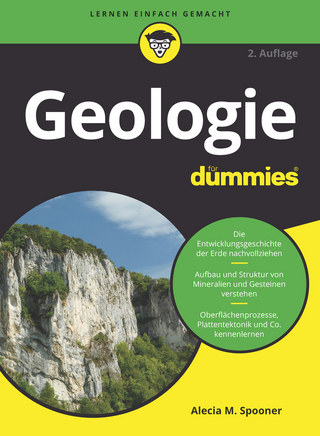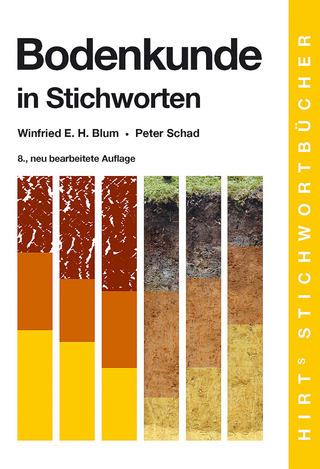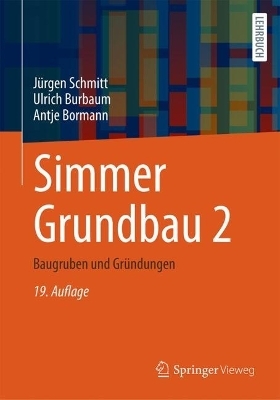
Formulas and Calculations for Drilling Operations
Wiley-Scrivener (Verlag)
978-1-119-08362-7 (ISBN)
Presented in an easy-to-use format, this second edition of Formulas and Calculations for Drilling Operations is a quick reference for day-to-day work out on the rig. It also serves as a handy study guide for drilling and well control certification courses. Virtually all the mathematics required on a drilling rig is here in one convenient source, including formulas for pressure gradient, specific gravity, pump, output, annular velocity, buoyancy factor, and many other topics.
Whether open on your desk, on the hood of your truck at the well, or on an offshore platform, this is the only book available that covers the gamut of the formulas and calculations for petroleum engineers that have been compiled over decades. Some of these formulas and calculations have been used for decades, while others are meant to help guide the engineer through some of the more recent breakthroughs in the industry's technology, such as hydraulic fracturing and enhanced oil recovery.
There is no other source for these useful formulas and calculations that is this thorough. An instant classic when the first edition was published, the much-improved revision is even better, offering new information not available in the first edition, making it as up-to-date as possible in book form. Truly a state-of-the-art masterpiece for the oil and gas industry, if there is only one book you buy to help you do your job, this is it!
James G. Speight, PhD, has more than forty-five years of experience in energy, environmental science, and ethics. He is the author of more than sixty-five books in petroleum science, petroleum engineering, biomass and biofuels, and environmental sciences. Although he has always worked in private industry which focused on contract-based work, Dr. Speight has served as Adjunct Professor in the Department of Chemical and Fuels Engineering at the University of Utah and in the Departments of Chemistry and Chemical and Petroleum Engineering at the University of Wyoming. In addition, he was a Visiting Professor in the College of Science, University of Mosul, Iraq and has also been a Visiting Professor in Chemical Engineering at the University of Missouri-Columbia, the Technical University of Denmark, and the University of Trinidad and Tobago.
Preface xiii
1 Standard Formulas and Calculations 1
1.01 Abrasion Index 1
1.02 Acid Number 3
1.03 Acidity and Alkalinity 3
1.04 Annular Velocity 4
1.05 Antoine Equation 5
1.06 API Gravity - Kilograms per Liter/Pounds per Gallon 5
1.07 Barrel - Conversion to other Units. 15
1.08 Bernoulli’s Principle 15
1.09 Brine 16
1.10 Bubble Point and Bubble Point Pressure 16
1.11 Buoyancy, Buoyed Weight, and Buoyancy Factor 18
1.12 Capacity 19
1.12.1 Hole (Pipe, Tubing) Capacity (in barrels per one linear foot, bbl/ft) 20
1.12.2 Annular Capacity 20
1.12.3 Annular Volume
1.13 Capillary Number 21
1.14 Capillary Pressure 21
1.15 Cementation Value 22
1.16 Composite Materials 23
1.17 Compressibility 23
1.18 Darcy’s Law 25
1.19 Dew Point Temperature and Pressure 26
1.20 Displacement 27
1.21 Effective Weight 28
1.22 Flow Through Permeable Media 29
1.22.1 Productivity Index 29
1.22.2 Steady-State Flow 29
1.22.3 Linear Flow 39
1.22.4 Spherical Flow 39
1.23 Flow Through Porous Media 39
1.24 Flow Velocity 40
1.25 Fluid Saturation 41
1.26 Formation Volume Factor - Gas 41
1.27 Formation Volume Factor - Oil 42
1.28 Friction 42
1.28.1 Coefficient of Friction 42
1.28.2 Types of Friction 43
1.28.3 Friction and Rotational Speed 43
1.29 Gas Deviation Factor 43
1.30 Gas Solubility 44
1.31 Gas-Oil Ratio 44
1.32 Geothermal Gradient 45
1.33 Hole Capacity 45
1.34 Horsepower 50
1.35 Hydrostatic Pressure 51
1.36 Isothermal Compressibility of Oil 51
1.37 Marx-Langenheim Model 52
1.38 Material Balance 53
1.39 Modulus of Elasticity 55
1.40 Oil and Gas Originally in Place 55
1.41 Oil Recovery Factor 56
1.42 Permeability 57
1.43 Poisson’s Ratio 57
1.44 Porosity 59
1.45 Pressure Differentials 61
1.46 Productivity Index 62
1.47 PVT Properties 62
1.47.1 Specific Gravity and Molecular Weight 62
1.47.2 Isothermal Compressibility 62
1.47.3 Undersaturated Oil Formation Volume Factor 63
1.47.4 Oil Density 63
1.47.5 Dead Oil Viscosity 63
1.47.6 Undersaturated Oil Viscosity 63
1.47.7 Gas/Oil Interfacial Tension 63
1.47.8 Water/Oil Interfacial Tension 63
1.48 Reserves Estimation 65
1.49 Reservoir Pressure 65
1.50 Resource Estimation 67
1.51 Reynold’s Number 67
1.52 Saturated Steam 67
1.53 Standard Oilfield Measurements 68
1.54 Twist 69
1.55 Ultimate Tensile Strength 70
1.56 Volume Flow Rate 70
1.57 Volumetric Factors 71
1.58 Yield Point 72
2 RIG Equipment 73
2.01 API Casing Grades 73
2.02 Block Efficiency Factor 74
2.03 Blocks and Drilling Line 74
2.04 Crown Block Capacity 75
2.05 Derrick Load 76
2.06 Energy Transfer 77
2.07 Engine Efficiency 78
2.08 Line Pull Efficiency Factor 79
2.09 Mud Pump 79
2.09.1 Volume of Fluid Displaced 80
2.09.2 Volumetric Efficiency 80
2.09.3 Pump Factor 81
2.10 Offshore Vessels 81
2.10.1 Terminology 82
2.10.2 Environmental Forces 83
2.10.3 Riser Angle 83
2.11 Rotary Power 85
2.12 Ton-Miles Calculations 85
2.12.1 Round-Trip Ton Miles Calculations 86
2.12.2 Drilling Ton-Miles Calculations 86
2.12.3 Coring Ton-Miles Calculations 86
2.12.4 Casing Ton-Miles Calculations 86
3 Well Path Design 89
3.01 Average Curvature-Average Dogleg Severity 89
3.02 Bending Angle 89
3.03 Borehole Curvature 90
3.03.1 General Formula 90
3.03.2 Borehole Radius of Curvature 90
3.04 Borehole Torsion 91
3.04.1 General Method 91
3.04.2 Cylindrical Helical Method 91
3.05 Horizontal Displacement 92
3.06 Magnetic Reference and Interference 93
3.07 Tool Face Angle 94
3.08 Tool Face Angle Change 96
3.09 Tortuosity 97
3.09.1 Absolute and Relative Tortuosity 97
3.09.2 Sine Wave Method 98
3.09.3 Helical Method 99
3.09.4 Random Inclination Azimuth Method 99
3.09.5 Random Inclination Dependent Azimuth Method 100
3.10 Types of Wellpath Designs 100
3.11 Vertical and Horizontal Curvatures 100
3.12 Wellbore Trajectory Uncertainty 101
3.13 Wellpath Length Calculations 103
4 Fluids 105
4.01 Acidity-Alkalinity 105
4.02 Base Fluid – Water-Oil Ratios 106
4.03 Common Weighting Materials 107
4.04 Diluting Mud 108
4.05 Drilling Fluid Composition 109
4.06 Equivalent Mud Weight 110
4.07 Fluid Loss 110
4.08 Marsh Funnel 112
4.09 Mud Rheology 112
4.10 Mud Weighting 114
4.11 Plastic Viscosity, Yield Point, and Zero-Sec Gel 116
4.11.1 Bingham, Plastic Model 116
4.11.2 Shear Stress and Shear Rate 117
4.11.3 Power Law 117
4.12 Reynolds Number and Critical Velocity 118
4.13 Slip Velocity 118
5 Hydraulics 121
5.01 Basic Calculations 121
5.01.1 Critical Velocity 121
5.01.2 Pump Calculations 121
5.02 Bingham Plastic Model 122
5.03 Bit Hydraulics 124
5.03.1 Common Calculations 124
5.03.2 Optimization Calculations 125
5.03.2.1 Limitation 1 – Available Pump Horsepower 126
5.03.2.2 Limitation 2 – Surface Operating Pressure 126
5.04 Critical Transport Fluid Velocity 127
5.05 Equivalent Circulating Density 127
5.06 Equivalent Mud Weight 127
5.07 Gel Breaking Pressure 128
5.08 Hole Cleaning – Cuttings Transport 128
6 Tubular Mechanics 131
6.01 API Casing and Liners – Weight, Dimensions, Capacity, and Displacement 131
6.02 API Drill Pipe Capacity and Displacement 134
6.03 Bending Stress Ratio 135
6.04 Buckling Force 135
6.05 Drag Force 136
6.06 Drill Collar Length 137
6.07 Fatigue Ratio 138
6.08 Length Change Calculations 138
6.09 Maximum Permissible Dogleg 139
6.10 Pipe Wall Thickness and other Dimensions 140
6.11 Slip Crushing 140
6.12 Stress 145
6.12.1 Radial Stress 145
6.12.2 Tangential Stress 145
6.12.3 Longitudinal Stress 145
6.12.4 Stress Ratio 146
6.13 Tension 146
6.14 Torque 146
7 Drilling Tools 149
7.01 Backoff Calculations 149
7.02 Downhole Turbine 152
7.03 Jar Calculations 153
7.03.1 Force Calculations for Up Jars 153
7.03.2 Force Calculations for Down Jars 153
7.04 Overpull/Slack-off Calculations 155
7.05 Percussion Hammer 157
7.06 Positive Displacement Motor (PDM) 157
7.07 Rotor Nozzle Sizing 157
7.08 Stretch Calculations 159
8 Pore Pressure and Fracture Gradient 161
8.01 Formation Pressure 161
8.01.1 Hubert and Willis Correlation 161
8.01.2 Matthews and Kelly Correlation 162
8.01.3 Eaton’s Correlation 163
8.01.4 Christman’s Correlation 163
8.02 Leak-off Pressure 163
9 Well Control 165
9.01 Accumulators 165
9.02 Driller’s Method 166
9.03 Formulas Used in Kick and Kill Procedures 167
9.04 Hydrostatic Pressure Due to the Gas Column 168
9.05 Kill Methods 168
9.06 Kill Mud Weight 169
9.07 Leak-off Pressure 170
9.08 Length and Density of the Kick 171
9.08.1 Length of the Kick 171
9.08.2 Density of the Kick 171
9.08.3 Type of Kick 172
9.08.4 Kick Classification 172
9.08.5 Kick Tolerance 173
9.09 Maximum Allowable Annular Surface Pressure 174
9.10 Riser Margin 175
10 Drilling Problems 177
10.01 Differential Sticking Force 177
10.01.1 Method 1 178
10.01.2 Method 2 178
10.01.3 Method 3 179
10.02 Hole Cleaning – Slip Velocity Calculations 179
10.02.1 Chien Correlation 179
10.02.2 Moore Correlation 180
10.02.3 Walker-Mays Correlation 180
10.03 Increased Equivalent Circulating Density (ECD) Due to Cuttings 181
10.04 Keyseating 182
10.05 Lost Circulation 183
10.06 Common Minerals and Metals Encountered During Drilling Operations 185
10.07 Mud Weight Increase Due to Cuttings 185
10.08 Pressure Loss in the Drill String 186
10.09 Spotting Fluid Requirements 187
11 Cementing 189
11.01 API Classification of Cement 189
11.02 Cement: Physical Properties of Additives 191
11.03 Cement Plug 192
11.04 Cement Slurry Requirements 194
11.05 Contact Time 195
11.06 Gas Migration Potential 195
11.07 Hydrostatic Pressure Reduction 196
11.08 Portland Cement – Typical Components 197
11.09 Slurry Density 198
11.10 Yield of Cement 198
12 Well Cost 199
12.01 Drilling Cost 199
12.02 Expected Value 200
12.03 Future Value 200
12.04 Price Elasticity 201
13 Appendices 203
Glossary 243
Bibliography and Information Sources 273
About the Author 277
Index 279
| Erscheinungsdatum | 15.07.2018 |
|---|---|
| Sprache | englisch |
| Maße | 152 x 229 mm |
| Gewicht | 574 g |
| Themenwelt | Mathematik / Informatik ► Mathematik |
| Naturwissenschaften ► Geowissenschaften ► Geologie | |
| Technik ► Bergbau | |
| Technik ► Elektrotechnik / Energietechnik | |
| ISBN-10 | 1-119-08362-1 / 1119083621 |
| ISBN-13 | 978-1-119-08362-7 / 9781119083627 |
| Zustand | Neuware |
| Informationen gemäß Produktsicherheitsverordnung (GPSR) | |
| Haben Sie eine Frage zum Produkt? |
aus dem Bereich


